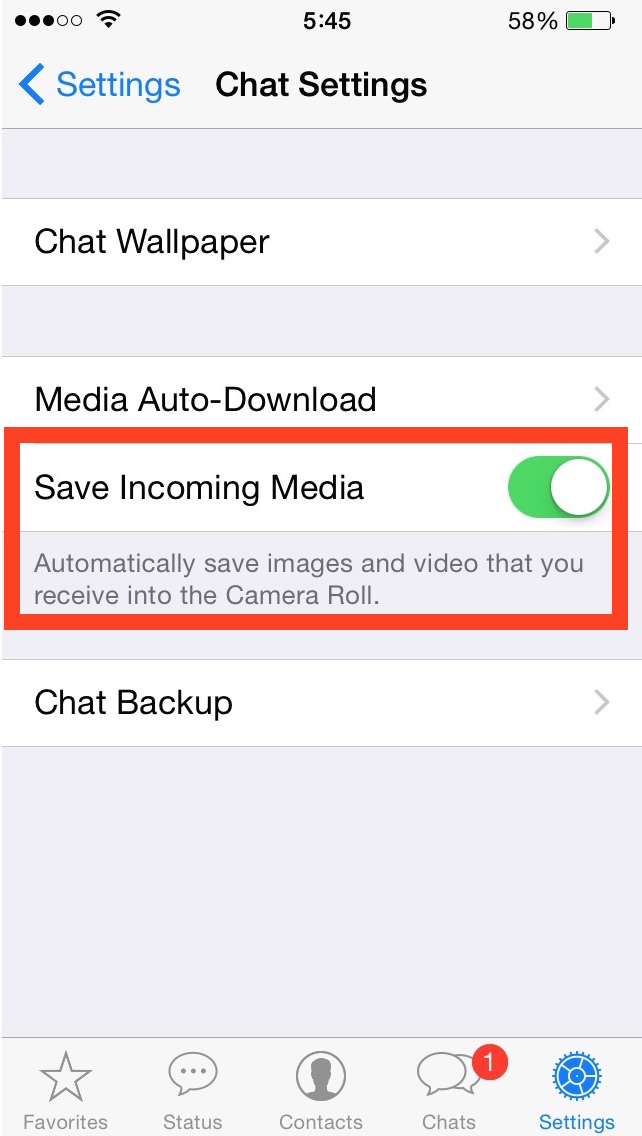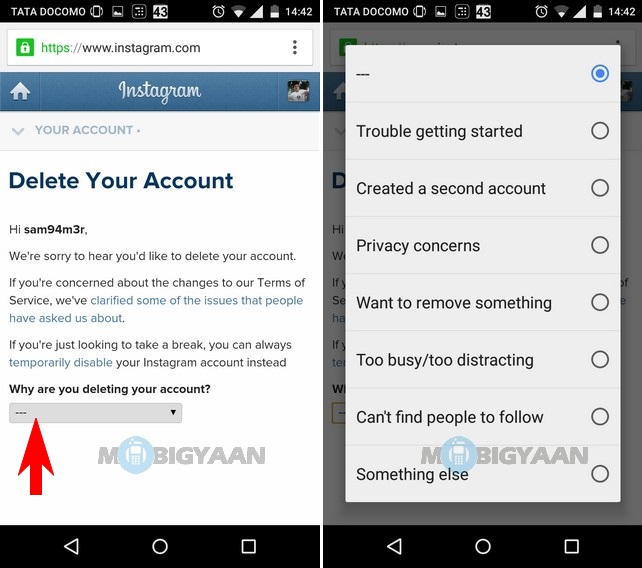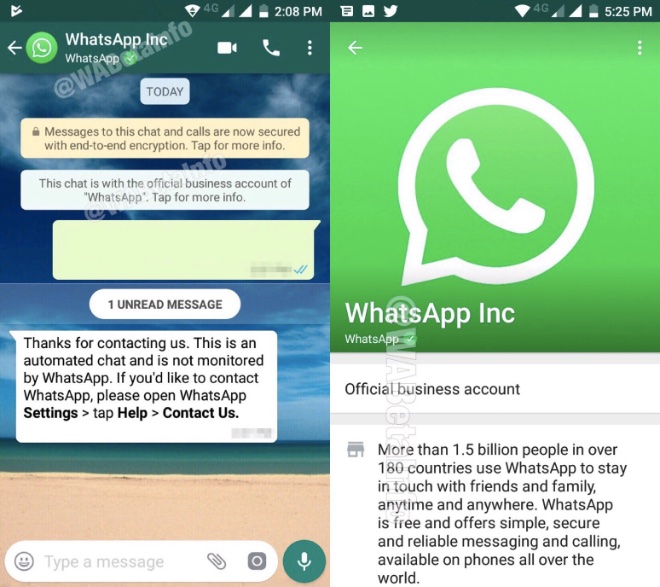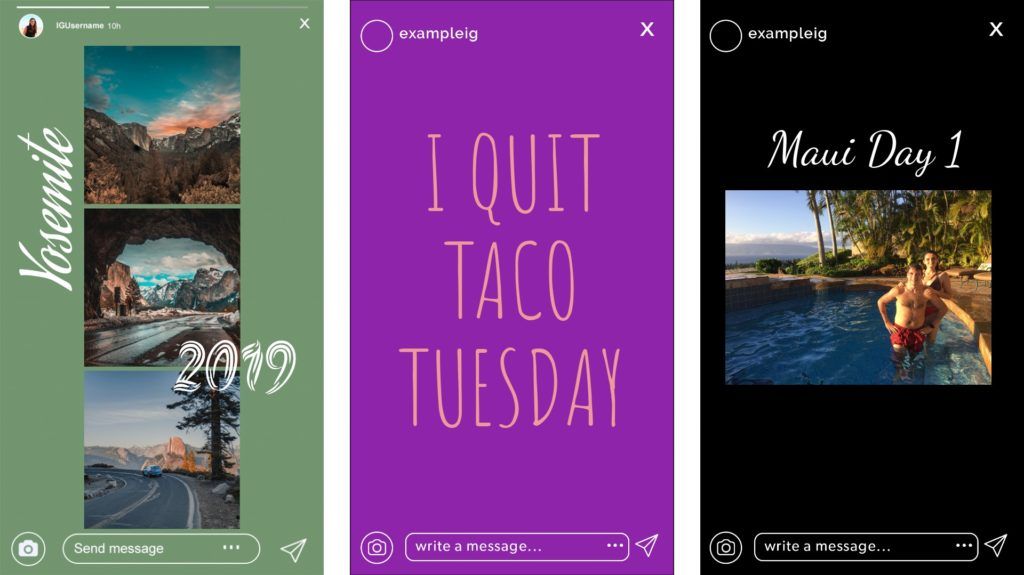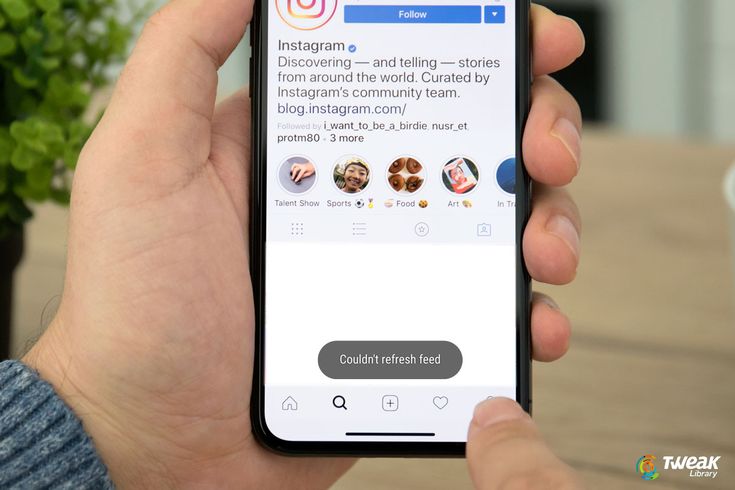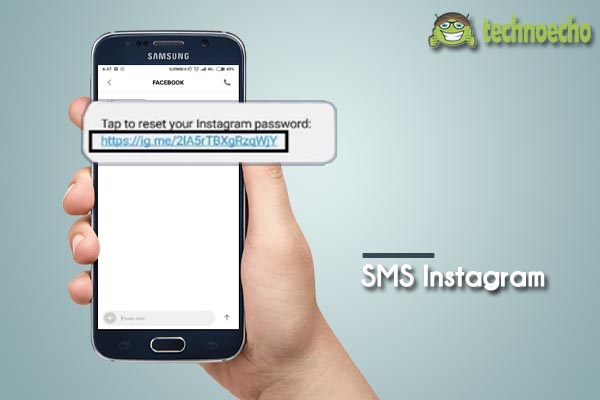How to save all media from whatsapp
4 Easy Ways to Save Photos from WhatsApp
Before WhatsApp, you may have needed to jump through multiple hoops to transfer photos, sometimes even having to pay. With WhatsApp, all you need is an internet connection. But how do you save the photos you get through WhatsApp?
In this article, we share with you some of the best ways that you can save photos from WhatsApp.
How to Save Photos from WhatsApp to Android
1.1 Manually Save Photos
You can manually export photos from WhatsApp to your gallery or any other location on the device. This can be done very easily using the Google Photos app. If you don’t have the Google Photos app, you can use any other file explorer app.
Follow these simple steps to do it:
- Open the chat with the photo that you would like to save. Select the photo and the tap on the menu option (three-dots at the top). Tap “Share”.
- In the options that appear, either choose the file explorer app to save the file or choose the upload to ‘Google Photos’ option.
- If you choose Google Photos, select the images and save it to your device. The photo will appear in the “Downloads” folder.
You can also save the WhatsApp photos manually to other devices by emailing them to yourself. Here’s how to do it:
- Select the photo that you would like to save.
- Tap on the “Share” option in the menu at the top.
- Tap on the email application you would like to use and then send the email to your own email address.
- Open the email on the other device and download the photos. You can then move the photo from the downloads folder to any other folder.
1.2 Automatically Save Photos
You can also automatically save photos from the gallery. Here’s how to turn on the function:
- Open WhatsApp and then tap on the menu (three dots) at the top right corner.
- Select “Settings” in the popup that appears and then select “Chats”.
- Make sure that “Media Visibility” is enabled. The photos in WhatsApp will be automatically downloaded to your gallery app.
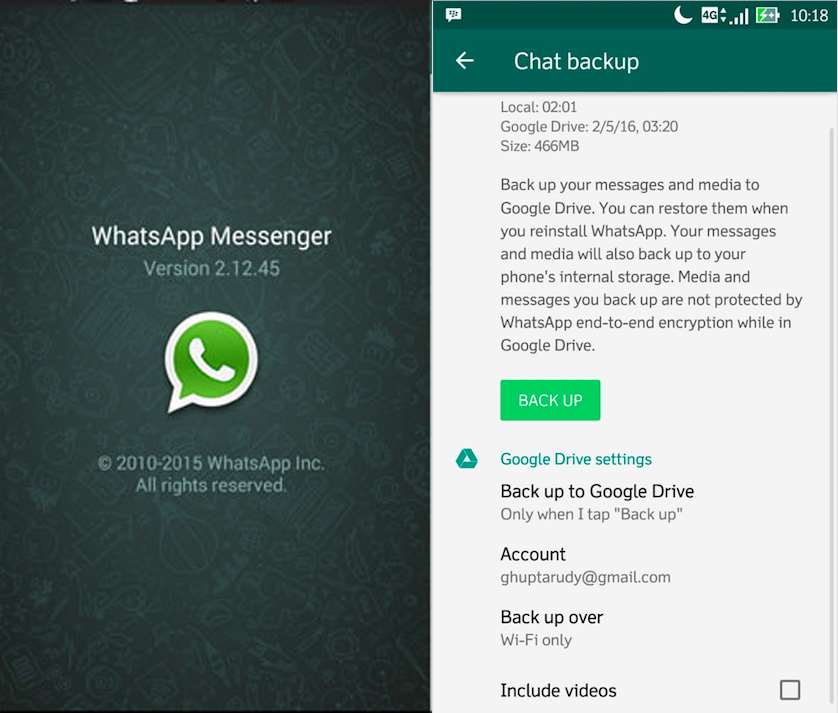
- Then go to “Data and Storage usage” and configure the “Media-auto download” settings to make sure the photos are automatically downloaded.
Here, you can choose to automatically use Wi-Fi or cellular data to download the photos. The downloaded images will be in a folder named “WhatsApp Images” on your device and you can move them to another folder.
Save Photos from WhatsApp to iPhone
If you want to save photos from WhatsApp to your iPhone, you will first of all need to give WhatsApp permission to access the Photos App on your iPhone. Here’s how to do it:
- Open the Settings app on your iPhone.
- Scroll down to tap “Privacy”.
- Tap “Photos” and then scroll down to select “WhatsApp”.
- Tap “Read and Write”.
Now WhatsApp will be able to access your photo library. Follow these simple steps to manually save the WhatsApp photos to the camera roll:
- Open “WhatsApp” and then open the chat with the photos you want to save.

- Tap and hold on the image and then select “Save”.
- You can also select the “Share” option from the bottom left corner and then select “Save”.
- The photo will be saved to the device’s camera roll and you can easily move them to any other folder on the device.
Save Photos from WhatsApp to PC/Android/iPhone
If you would like to transfer WhatsApp to PC or another device, we recommend using Mobitrix WhatsApp Transfer. This program is the most effective solution to manage WhatsApp data effectively. It is useful for a wide range of devices since it supports all Android devices and tablets and all iOS devices.
The following are some of the ways Mobitrix can be useful to you in terms of media transfer:
- Mobitrix allows you to easily export all medial files including photo, videos and audio all at once.
- You can also choose to only export WhatsApp photos without the WhatsApp chats.
- Once the photos are transferred to the computer, you can filter the photos by time.

- Mobitrix also allows you to save WhatsApp chats on to your computer and read them as they appear on the phone
Summary
The solutions above will help you easily move WhatsApp photos to any other folder on your device. With Mobitrix, you can save the photos to your computer or transfer them to another device. Let us know your thoughts in the comments section below.
How to export content from WhatsApp
By Yvonne Ng and Gabi Ivens
Published on: 18 December 2018
The messaging platform WhatsApp has 1.5 billion users worldwide and is increasingly being used as a tool to organize, mobilize, as well as to share important human rights content.
This tutorial, put together by WITNESS, walks you through how to download and export your chat messages, videos, photos, and other media from WhatsApp along with basic metadata. Since WhatsApp is a closed platform, we have to use its own built-in tools to access, download, and export the content.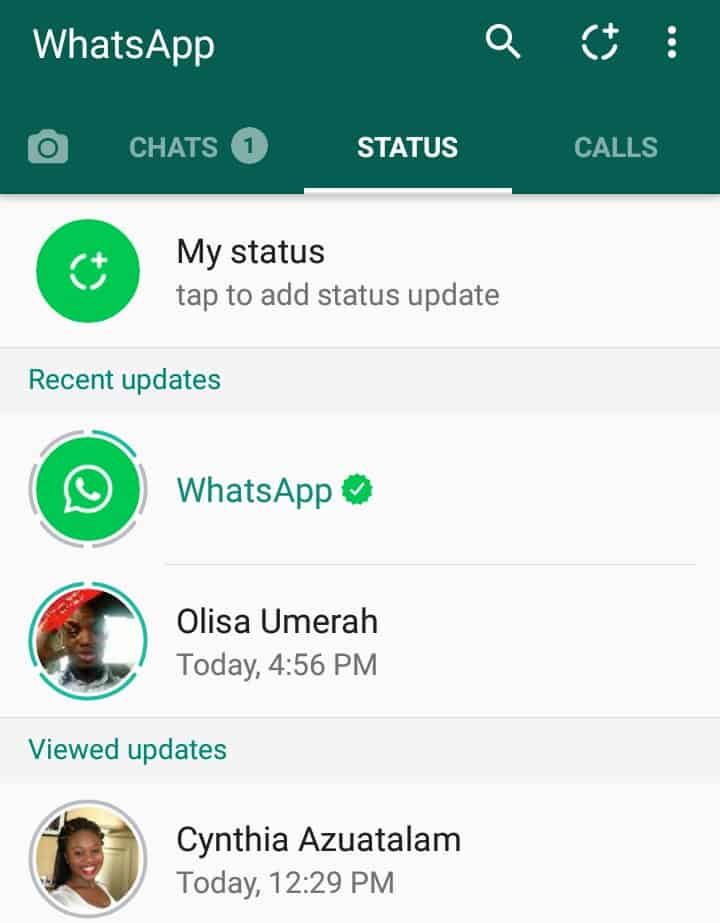
Exporting content is different from backing up your WhatsApp. Backups are designed for restoring your WhatsApp account, for example if you are changing phones, and are stored in an encrypted WhatsApp database format that cannot be opened or read outside of WhatsApp. Instead, this tutorial walks you through exporting content (e.g. .txt and .mp4 files) for access and use beyond WhatsApp. This exported content cannot be restored to your WhatsApp account like a backup can, but is useful if you want to save important content outside of WhatsApp. See our tutorial on backing up on WhatsApp.
Why would you want to export content off WhatsApp?
- To make use of important evidence and information beyond WhatsApp
Important evidence and information is being shared on WhatsApp, from videos of human rights abuses to images created to misinform. This information can be used outside of WhatsApp for research, journalistic purposes, fact-checking, mobilization, or in courts of law. For example, you can export a video from WhatsApp to use it in a report, share it with non-WhatsApp users, analyse it for veracity, or edit it into your own video.
For example, you can export a video from WhatsApp to use it in a report, share it with non-WhatsApp users, analyse it for veracity, or edit it into your own video.
- To preserve evidence and information outside of a proprietary system
Exporting information from a closed system like WhatsApp allows you to have control over its preservation. Even if WhatsApp disappears, you will still have your information. You can decide how to organize it, where it is stored, how many copies you have, who has access, and how you want to preserve it in the long-term. A good organization and storage plan can enable you to reliably locate and retrieve your content whenever you need it.
- In case your phone gets lost, stolen or broken
WhatsApp messages and media are stored on your phone, not on WhatsApp’s servers. WhatsApp deletes messages from their servers either after they are delivered or after 30 days. But phones can get lost, stolen, or destroyed.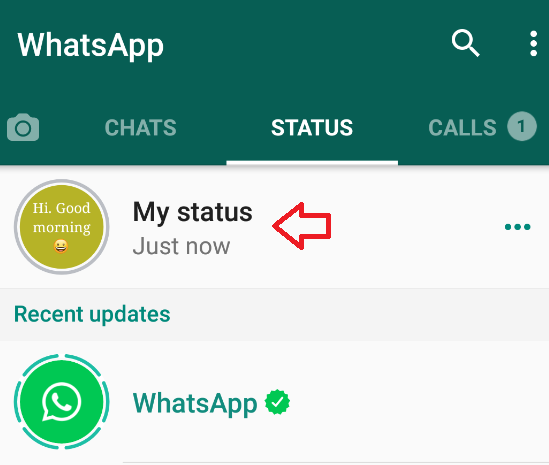 Besides cloud backup, which you may want to avoid for security reasons (explained below), exporting your WhatsApp content is one way to save important media and information from your phone.
Besides cloud backup, which you may want to avoid for security reasons (explained below), exporting your WhatsApp content is one way to save important media and information from your phone.
- Authors can delete important information using the Delete for Everyone feature
With WhatsApp’s new Delete for Everyone feature, a person who writes a message can delete it from WhatsApp for all recipients within an hour of sending it. Exporting the message is a way to save a record of a message before it disappears.
- As an alternative to WhatsApp’s cloud backup options
WhatsApp provides built-in options to backup to Google Drive (Android) or iCloud (iPhone). These backups are encrypted by Google and Apple’s server side encryption, and additionally encrypted by WhatsApp in the case of iCloud, but they aren’t protected by WhatsApp´s end-to-end encryption. End-to-end encryption means that only you and the person you are communicating with can have access to your messages ensuring that nobody inbetween or the service provider themselves can have access to them.
Google has the capability to decrypt your backups on their end, and provide them to law enforcement, and the additional encryption provided to iCloud users can be decrypted using a SIM card with your phone number- and potentially by WhatsApp. Google Drive backups will auto-delete if they aren’t updated in more than one year. To avoid using these cloud services, Android users can opt to use local (encrypted) backup, while iPhone users can use iTunes (with encrypted option) to back up their entire phone to their computer, outside of WhatsApp. Exporting is another alternative to backing up to save important messages and media, although you cannot restore exported content to a WhatsApp account as you would a backup.
Consent and permission
When exporting videos, images, voice notes and chats from WhatsApp that are sent to you privately or in a group, it is important to consider the permission you have or don’t have from those posting the content. WITNESS has put together a tipsheet on informed consent that outlines its four main elements: disclosure, voluntariness, comprehension, and competence.
Consider asking the group about the norms around content when you join. There may be an implicit understanding that content from the group may be made public, or group members may consider their content private.
You could also consider asking the individuals or the group who shared the content for their permission to safely export it, and inform them where you will be storing it and who will have access to it. This also lets them know where and how they can retrieve a copy of the content if they ever delete or lose their own copies.
There are situations, however, where asking for consent could put you or those you are asking in difficult or dangerous positions; for instance, if a phone is confiscated and messages indicating the existence of valuable information stored elsewhere are found. It is important to assess the specific context and threat models of those who you are receiving the information from.
As with many questions of permission and consent, they are context specific. In situations of conflict, for example, where there is a need to preserve content quickly that may be soon deleted it might be appropriate to preserve the content first, keep it in a safe and restricted place, and then address the permissions at a later stage.
In situations of conflict, for example, where there is a need to preserve content quickly that may be soon deleted it might be appropriate to preserve the content first, keep it in a safe and restricted place, and then address the permissions at a later stage.
How to save content from WhatsApp
Click on the links below to be taken to the section relevant to you and your operating system.
- I am using the Android operating system on my phone
- I want to save individual videos or photos
- I want to save my entire chat history
- I am using an the iOS operating system on my phone
- I want to save individual videos or photos
- I want to save my entire chat history
- I want to save large files through WhatsApp desktop
- I want to delete content from my device after exporting
- I want to preserve my exported content
I am using the Android operating system on my phone
Do you want to save individual videos or photos, or do you want to save your entire chat history? This tutorial walks you through both! Skip down if you want to save your entire chat history.
Tip: If saving a video or photo for evidentiary purposes, you may want to save the entire chat history to provide context of where, when, and by whom the video or photo was shared.
I want to save individual videos or photosSaving individual videos or photos off of WhatsApp is a two-step process. First, you need to download the media from WhatsApp’s servers to WhatsApp on your phone. Then, you need to export the media from your WhatsApp to another location (like to your phone gallery or to your computer).
- Download from WhatsApp servers
You can download media selectively by simply selecting it within WhatsApp.
You can also set WhatsApp up to auto-download using mobile data, using Wi-Fi, when roaming, or not at all; you can also select what kind of messages you want to auto-download (in WhatsApp Settings > Data and Storage Usage). Auto-download will save incoming media to your Android and keep it available within the app.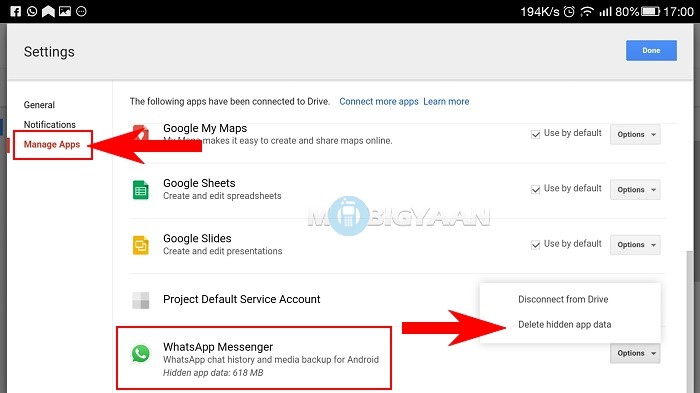 By default, photos are set to auto-download unless you turn it off.
By default, photos are set to auto-download unless you turn it off.
Tip: Once you download a message or media to your phone, it is no longer protected by WhatsApp’s end-to-end encryption.
- Export from your WhatsApp
On Android, WhatsApp will automatically export your downloaded media to your Gallery, unless you create a .nomedia file in your WhatsApp images folder.
To export an individual piece of media elsewhere, like to your computer, select the media within the chat to view and download it, then select the Menu button and select “Share.” Select the export option that is convenient for you (options will depend on your device/services).
Unlike iPhones, Androids also allow users to access the stored WhatsApp media files directly using a file manager app. Your device may have a built-in file manager (depends on manufacturer) or you can install one from the Play Store. If installing from the PlayStore, pay attention to who created the app and what kind of information they collect.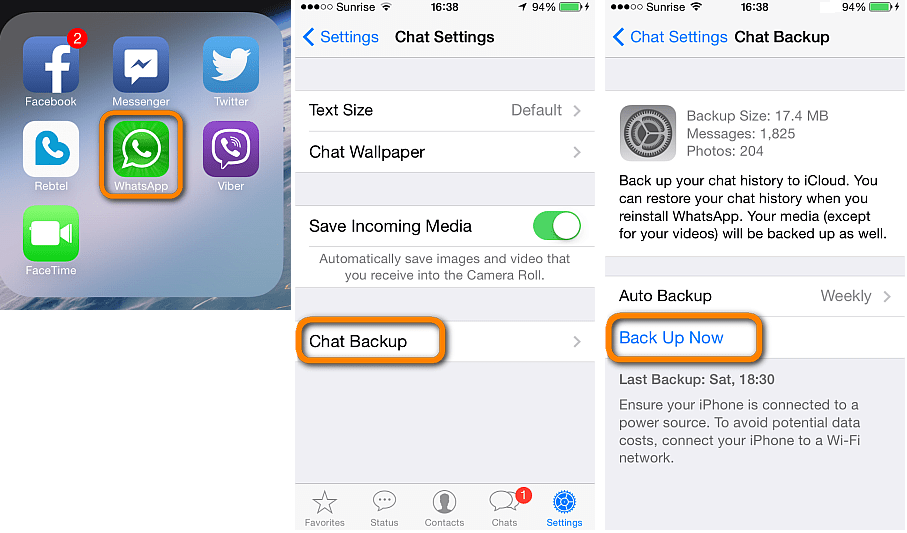
In the file manager, navigate to WhatsApp > Media > WhatsApp Video (path may differ slightly depending on device/file manager). In the Menu, tap “Share” and select the file(s) you want to export (this process may differ slightly depending on the file manager).
And that’s it! Now you should now have safely exported individual photos and videos. Go to the end of this tutorial to read about how to further preserve these files securely.
I want to save my entire chat historyThe easiest way to export an entire chat history, including video and photos, from your Android is to use the built-in “Export Chat” feature.
- Open the individual or group chat.
Tap the Menu Button shown in the image below
- Tap More, then Export chat.
You can choose whether or not to include video and photos in the export. If you want to include them, choose Include Media.
5. Choose an export option that is convenient for you and that lets you export the full chat history and media, if you choose to include media.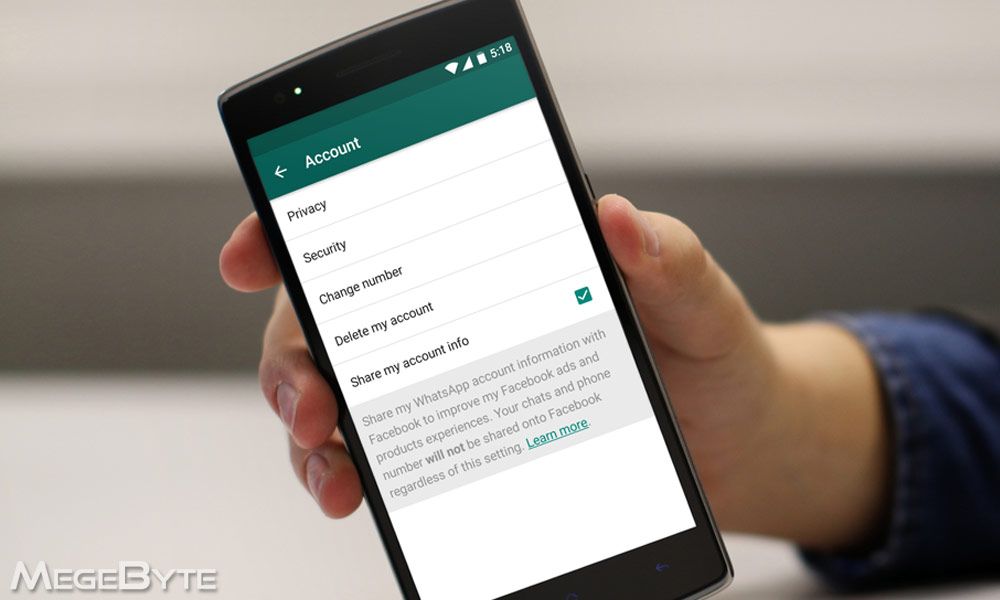 You might have different options depending on your device/services.
You might have different options depending on your device/services.
Tip: Taking a screenshot is another super-quick and useful way to make a record outside of WhatsApp of the context in which your media was shared. Keep in mind, however, that you will still need to export the video or photo. Also, the screenshot will capture the current screen rather than the whole chat history, and the text will not be searchable since it is an image.
Workaround for Android’s Export File Size Limitation
In our testing, we encountered problems exporting full chat histories with media files that were larger than 25MB, regardless of export method (on iPhone, there does not seem to be an issue). Instead of the full chat history and media, we could only export the most recent 25MB of chat and media.
As a workaround to this limitation, you can export the chat history without media, which will result in a smaller file size, and download media files separately via the WhatsApp desktop or web app. When exported without media, the text of the exported chat history will not include the media filenames. However, you can match up media downloaded in the desktop or web app with its place in the chat history by the time and date.
When exported without media, the text of the exported chat history will not include the media filenames. However, you can match up media downloaded in the desktop or web app with its place in the chat history by the time and date.
When exported from Android with media included, the video filename is included in the chat history.
When exported from Android without media included, the video filename is not included.
However, media exported using the desktop or web app, or directly from your Android via your file manager can be matched with its chat history by its time and date.
Tip: Media exported from Android to Google Drive will not retain this time and date information in the filename.
Congratulations! Now you should now have safely exported your entire chat history along with videos and images. Go to the end of this tutorial to read about how to further preserve these files securely.
I am using an the iOS operating system on my phoneDo you want to save individual videos or photos, or do you want to save your entire chat history? This tutorial walks you through both! Skip down if you want to save your entire chat history.
Tip: If saving a video or photo for evidentiary purposes, you may want to save the entire chat history to provide context of where, when, and by whom the video or photo was shared.
I want to save individual videos or photos
Saving individual videos or photos off of WhatsApp is a two-step process. First, you need to download the media from WhatsApp’s servers to your own WhatsApp. Then, you need to export the media from your WhatsApp to another location (like to your phone gallery or to your computer).
- Download from WhatsApp servers
You can download media selectively by simply selecting it within WhatsApp, or you can set WhatsApp up to auto-download using WiFi, or Wifi and Cellular data (in WhatsApp Settings > Data and Storage Usage), which will automatically save all incoming photos, audio, videos, and/or documents to your iPhone and keep it available within the app.
- Export from your WhatsApp
You can then either export WhatsApp media to your iPhone camera roll or elsewhere.
I want to export my WhatsApp media to my iPhone camera roll
- To add individual WhatsApp media to your iPhone camera roll, first give WhatsApp Read and Write permission in your iPhone Settings > WhatsApp > Photos.
Security tip: Giving apps read and write permissions could potentially allow developers at WhatsApp access to your entire camera roll. Consider changing this setting back to ‘Never’ after you have exported your media. It is not entirely clear what happens when you revoke access to something you previously gave permission to however for future uses the app should not have access to your camera roll.
- Then play the video in WhatsApp, and tap the button and tap “Save”.
I want to export my WhatsApp media to my computer or elsewhere
- To export individual WhatsApp video to your computer or elsewhere, tap “Share” and select your sharing option.
And that’s it! Now you should now have safely exported individual photos and videos.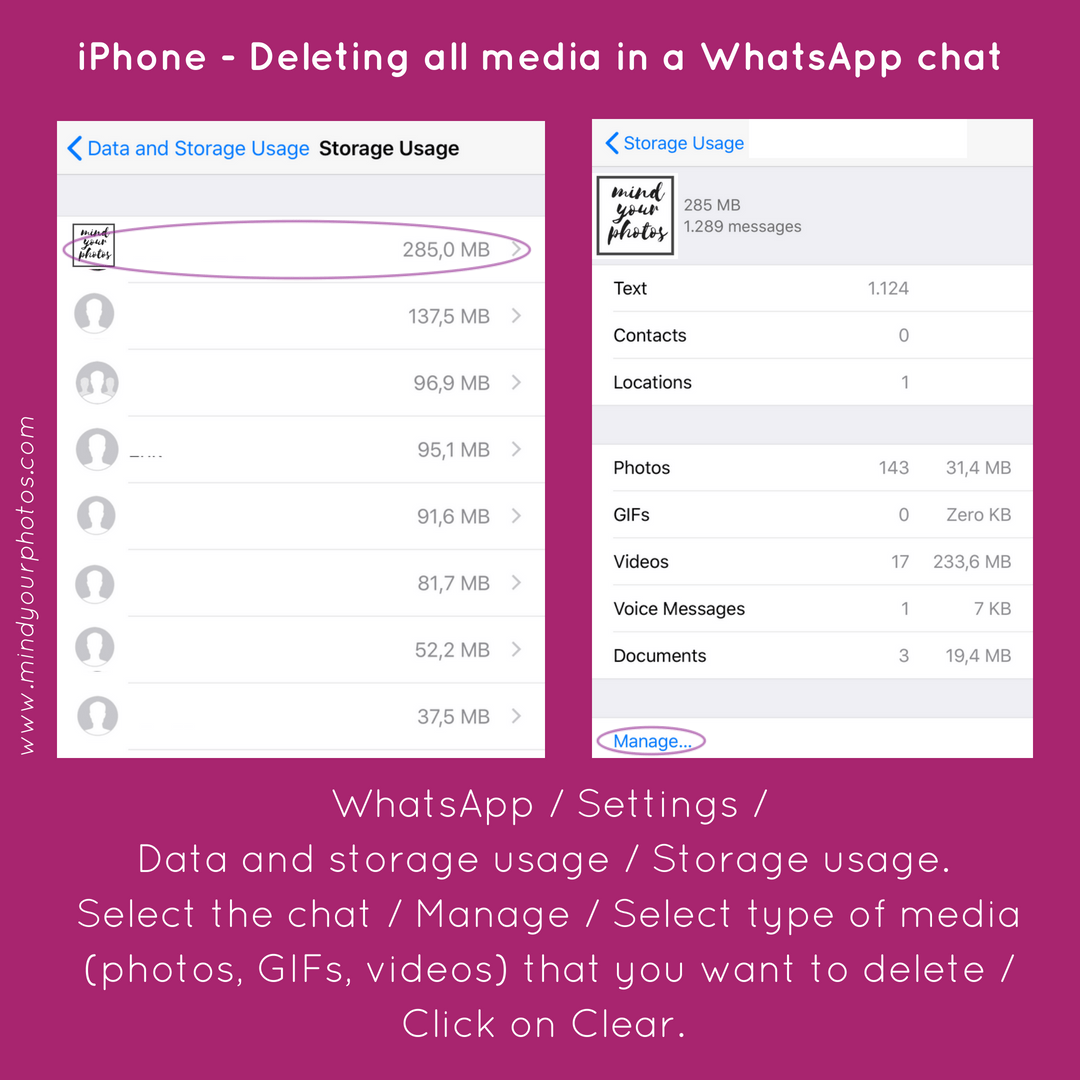 Go to the end of this tutorial to read about how to further preserve these files securely.
Go to the end of this tutorial to read about how to further preserve these files securely.
I want to save my entire chat history
The easiest way to export video and accompanying chat history from your iPhone is to use WhatsApp “Export Chat” feature.
- Open the individual or group chat.
- Tap on the chat name/heading to get the Contact Info page for the chat.
On the Contact Info page, tap Export Chat, and choose whether to include video or media or not in the export. If you want to include Media, choose Attach Media.
4. Choose the most convenient export method that lets you export the full chat history and media, if you are attaching media.
5. WhatsApp exports a ZIP file containing a .txt document, and if you choose to attach media, the media files. Expand the ZIP file to see the contents:
In the “_chat.txt” you will see your chats and references to the media files:
Tip: Taking a screenshot is another super-quick and useful way to make a record outside of WhatsApp of the context in which your media was shared. Keep in mind, however, that you will still need to export the video or photo. Also, the screenshot will capture the current screen rather than the whole chat history, and the text will not be searchable since it is an image.
Keep in mind, however, that you will still need to export the video or photo. Also, the screenshot will capture the current screen rather than the whole chat history, and the text will not be searchable since it is an image.
Congratulations! Now you should now have safely exported your entire chat history along with videos and images. Go to the end of this tutorial to read about how to further preserve these files securely. For those interested in more information concerning storage options for your exports download this tipsheet.
I want to use the desktop/web app
WhatsApp’s desktop app and WhatsApp Web allow you to run WhatsApp natively on your computer or in your browser. To do this, you need to pair/sync the desktop or web app with the app on your phone. The desktop and web apps do not allow you to download and export chat messages and media files en masse in the same way the mobile app does; however you can download and export individual video and images. This can be helpful when you have large video files that you want to avoid transferring through your mobile device.
This can be helpful when you have large video files that you want to avoid transferring through your mobile device.
While the filenaming differs, media files are exactly the same whether they are exported from the mobile app or the desktop/web apps.
- In the desktop or web app, click on the “down arrow” button on the top-right corner of the photo or video. Select “Download.” If the arrow is not immediately visible, hover your mouse on the image or video and a white arrow will appear on the top right corner.
2. Save the photo or video to your computer. The filename will indicate the date and time that the media was shared on WhatsApp.
3. For a quick way of saving the relevant chat messages that accompany the media, you can screenshot the chat messages and save them in the same folder as your video or image. This is useful if you use WhatsApp only on your computer rather than your phone, as there is no “export chat” feature on the desktop or web app.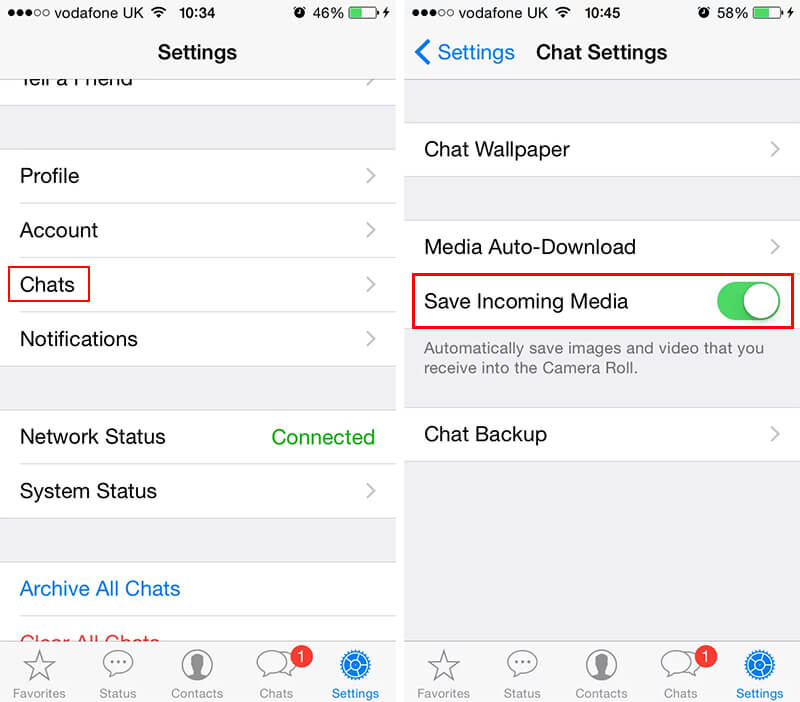
Tip: Taking a screenshot is another super-quick and useful way to make a record outside of WhatsApp of the context in which your media was shared. Keep in mind, however, that you will still need to export the video or photo. Also, the screenshot will capture the current screen rather than the whole chat history, and the text will not be searchable since it is an image.
Now you should have now have downloaded files directly onto your computer. So, what’s next? Skip down to the section on ‘Further Preservation’.
I want to delete content from my device after exportingI want to delete a message, photo or video from my device.
Once you have exported WhatsApp content you can delete the content both from your device and from your WhatsApp chat history, while still retaining an offline copy. By right clicking (for Web Whatsapp users) or selecting the message on your phone, then selecting ‘delete’ (if you don’t see this in your list of initial options press ‘more’ to find the ‘delete’ option ), you will then be given the option to select ‘delete for me.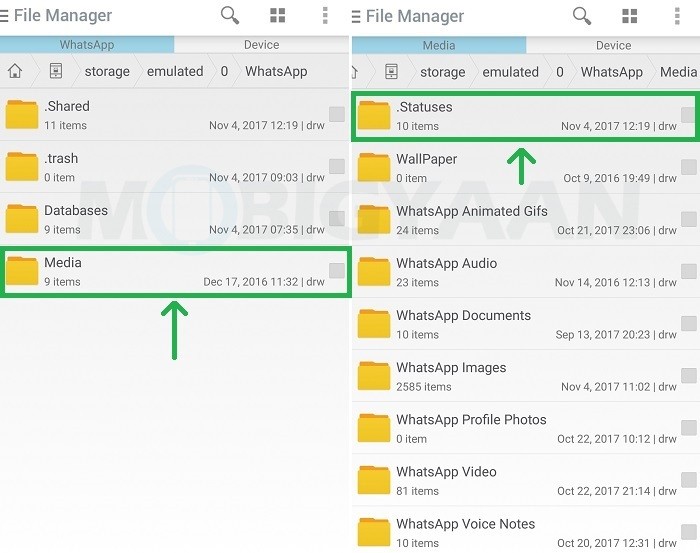 ’ This will delete the message from your chat history on your phone. It will not delete the message from other people’s phones, from your backups, or from their backups.
’ This will delete the message from your chat history on your phone. It will not delete the message from other people’s phones, from your backups, or from their backups.
On Android
On iPhone
I want to delete my message on everyone’s devices
In the first hour after posting a message, you have the option to delete your message for all recipients using the “Delete for Everyone” feature. Note that a recipient may export, screenshot, or back up your message before you delete it, which is out of your control.
On Android
On iPhone
On Desktop or Web:
Right click on the web desktop app and select the option ‘delete for everyone’
Once selected then you will see this message confirming you have deleted this message.
One last step is to delete the confirmation message from your phone. This is in case you are stopped and your phone is searched as to avoid answering questions as to what you deleted.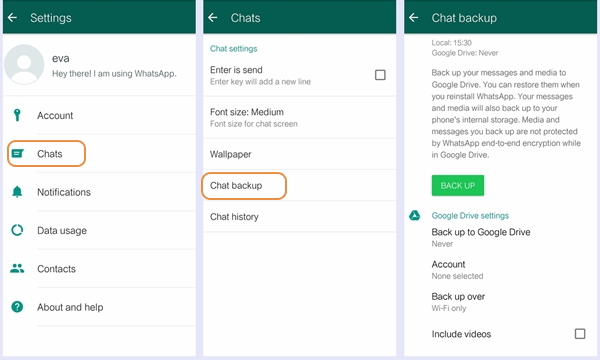
I want to preserve my exported content
Congratulations, you have successfully downloaded, exported, or in some instances deleted, your WhatsApp content! The next step is to safely preserve your exported content to ensure it is not altered, corrupted, misplaced, or deleted, and to make sure your information is secure.
We will cover detailed steps to preservation in a subsequent tutorial. For now, the main things you will have to do are:
- Organize your files by putting each chat history text file and associated media in a folder, and give the folder a straightforward and uniquely identifying name. For more on this see the section on Organizing from our Activists’ Guide to Archiving Video, and the Preserve section of our Activists’ Guide to Video Databases.
- Consider calculating and documenting hashes for the files so that you can test file fixity later on, and to be able to show that you haven’t altered the files from the time you made the hashes.
 For more on this see this section on Keeping Files Intact (and proving it) from our Activists’ Guide to Archiving Video.
For more on this see this section on Keeping Files Intact (and proving it) from our Activists’ Guide to Archiving Video.
- Store your files in a safe location, and backup to a separate safe location. Consider using encryption for security. For more on this see this section on Storage Strategies from our Activists’ Guide to Archiving Video, and the Preserve section of our Activists’ Guide to Video Databases.
If you need to keep track of a large amount of media, or a large number of chat histories, consider inventorying or cataloging your files in a spreadsheet or database so you can easily find and retrieve them later on. For more on this see this section on Cataloging from our Activists’ Guide to Archiving Video, and the Metadata section of our Activists’ Guide to Video Databases.
- Periodically check on the health of your files and your storage devices. If you previously hashed your files, run your hashes to check that your files haven’t changed.
 Replace storage devices before they start to malfunction. For more on this see this section on Storage Strategies from our Activists’ Guide to Archiving Video.
Replace storage devices before they start to malfunction. For more on this see this section on Storage Strategies from our Activists’ Guide to Archiving Video.
For more information on these topics and more, check out our Activists’ Guide to Archiving Video and our Activists’ Guide to Creating Video Databases!
***
Yvonne Ng is an audiovisual archivist and has been part of the WITNESS team since 2009. In collaboration with WITNESS regional leads, she trains and supports partners on collecting, managing, and preserving video documentation for human rights advocacy and evidence. She develops training resources related to archiving and preservation, such as the groundbreaking Activists’ Guide to Archiving Video. Yvonne also manages WITNESS’s own archive of human rights video.
Gabi Ivens is a Mozilla Fellow hosted at WITNESS. She is currently working on producing a number of tutorials to preserve content of human rights violations, researching technical solutions for indicating authenticity and provenance of visual content, and strategies concerning reducing stress and trauma when watching graphic or distressing videos.
How to save photos from WhatsApp on Android
WhatsApp, as you already know, is one of the most used instant messaging applications in the world. It allows you to send written messages as well as multimedia files, including photos and videos. If you are using the app, you may sometimes need to save photos that you have received from people you know. This guide will teach you how to save photos to WhatsApp on Android.
There are various ways to export photos from the WhatsApp app on your Android device, and you can use any of these methods that suits your needs.
- Part 1. How to save photos from WhatsApp to Gallery?
- Part 2. How to save WhatsApp photos to computer
- Part 3. How to save WhatsApp photos to Google Drive
- Part 4: How to save WhatsApp photos via email
Part 1. How to save photos from WhatsApp to Gallery?
If you want to know how to save photos from WhatsApp to Gallery, then this section is all you need.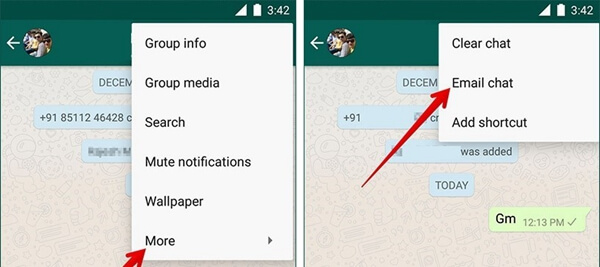 There are several ways to export images from WhatsApp to the Gallery app on your phone.
There are several ways to export images from WhatsApp to the Gallery app on your phone.
1. Automatically save WhatsApp photos to Android gallery
If you've ever noticed, WhatsApp actually offers an option where you can automatically download all the media you receive in your messages. Once you enable this option, all your WhatsApp photos will automatically be saved to your gallery.
Here we will show you how to save WhatsApp photos in the Gallery app on Android.
- Launch WhatsApp on your smartphone and then open the "Settings" of the application by tapping on the three dots in the upper right corner of the screen and then selecting the appropriate item from the menu that appears.
- Click Data & Storage, which will open the Application Options category containing the Media Startup section.
-
"Wi-Fi" - the WhatsApp option, activated by default, including for photos from chats, provides downloading of content during those periods when the messenger receives Internet from a network operating using the same technology.
 Click on this item, check the box next to "Photo" and save the parameter value by tapping "OK".
Click on this item, check the box next to "Photo" and save the parameter value by tapping "OK". -
"Mobile network" - if you want pictures from the messenger to be saved without your intervention, including when the device consumes traffic from 2G / 3G / 4G networks, click on this item. Next, check the checkbox located next to the name "Photo" and confirm the desire to change the parameter by touching "OK".
Your phone should now automatically upload photos from WhatsApp messages to your gallery.
2. Save WhatsApp photos to Android gallery manually
The above principle of copying data from WhatsApp while actively "consuming" content in chats can lead to a quick filling of the memory of the Android device, so many users deactivate the autoload option. Under these conditions, the possibility of selective downloading of photos can only be called partially realizable, and the process itself is as follows.
If you can't find your photo in this folder, look in the "Other" folder.
Part 2. How to save WhatsApp photos to computer
You can actually transfer your photos from WhatsApp to your computer and there is a tool to help you with this. The tool is called Tenorshare UltData WhatsApp Recovery and allows you to transfer all WhatsApp messages, including media files, from phone to computer.
If you are interested, below is how to save WhatsApp photos to computer using this tool.
- Get the above tool from his website and install it on your computer.
-
Launch the tool and select "Recover Whatsapp Data".
-
You need to connect your phone to your computer with a cable.
- Enable USB Debugging on your phone, if not already done.
-
Click "Start" in the tool on your computer.
-
Select the WhatsApp messages and photos you want to transfer to your computer and click Restore.
You did. With simple steps, you can save WhatsApp photos from Android to PC.
Part 3. How to Save WhatsApp Photos to Google Drive
If you want to save your WhatsApp photos to Google Drive, you can do so without installing any apps on your phone.
Here's how to save photos from WhatsApp to Android using Google Drive.
Part 4. How to save photos from WhatsApp to email
If you prefer email over anything else, you can use this feature to save photos to any of your email accounts.
- Open WhatsApp and access the photo you want to email.
- Click on the three dots in the upper right corner and select "Share".
- Select Gmail or whatever email application you use.
Send an email to yourself and you can open it on any of your devices to save your WhatsApp photo.
Remember that you need enough storage space in your mail service to use the email method. This should be fine if you share multiple photos most of the time.
Summary
Saving photos from WhatsApp chats is important for many users.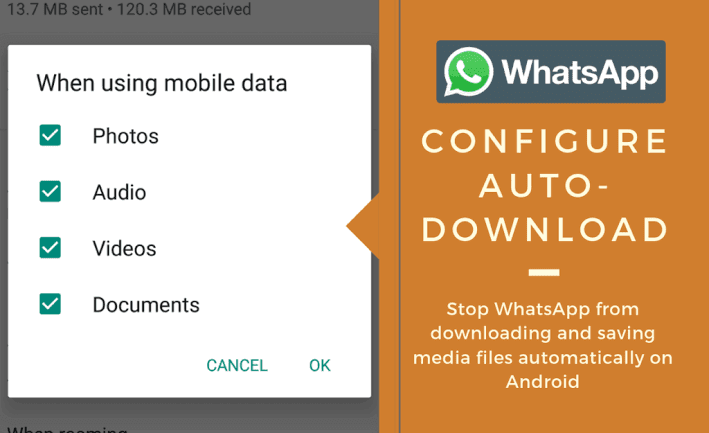 If you are one of them, now you know how to do it using the various methods available.
If you are one of them, now you know how to do it using the various methods available.
How to save photos from WhatsApp
Time to read the article 4 minutes.
The information is up to date! The material was checked on 12/9/2021.
Not all users know how to save photos from WhatsApp. You should figure out if it is possible to download media on iPhone and Android, how to set up auto-download for all contacts and for each correspondence separately.
In WhatsApp, you can save photos manually or by setting up autosave. On iPhone and Android, you can enable downloading for all media objects in the gallery and separately for each group and contact.
For Android
Saving photos from WhatsApp to the Android gallery is usually done automatically. By default, autosave is enabled in the messenger settings, thanks to which all received media files are immediately downloaded to the internal memory of the phone.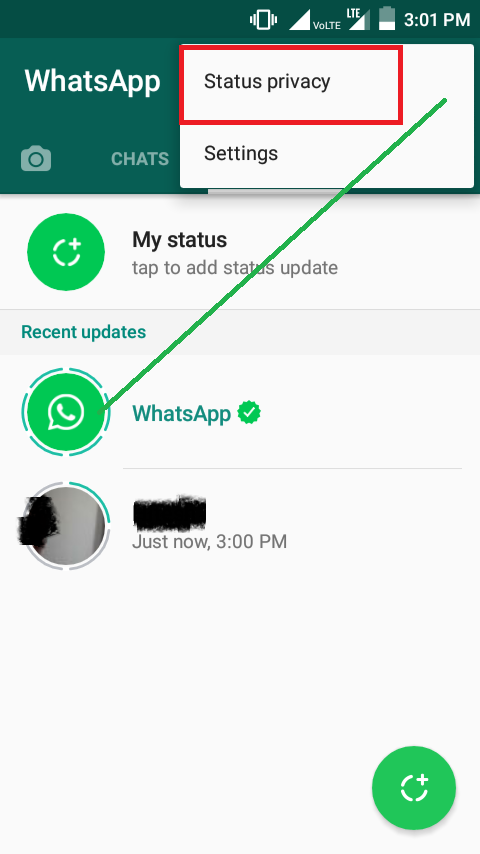
Startup
- Open the application, click on the ellipsis at the top of the screen. Through "Settings" go to "Data and storage".
- Under the "Media Startup" section, choose when you can save sent photos: when using wireless, mobile network or roaming.
If objects do not appear in the gallery after setting autoload, media visibility may be disabled. To fix this, you need to go to "Settings", "Chats" and put the "Media Visibility" toggle switch into working condition.
To configure the display of photos received from a specific person, you need to go to the contact settings. In the "Media" item, select "Default" (if saving is enabled in the general settings) or click "Yes".
Manual save
If the user receives a large number of media files from his contacts, it is better to disable auto-download. The memory will quickly fill up and you will have to delete objects manually. From WhatsApp, you can save photos on Android yourself in this way:
From WhatsApp, you can save photos on Android yourself in this way:
- Open the application, go to the chat. Photos that haven't been uploaded are blurry and show a download icon and file size.
- You must click on this icon and wait until the end of the download (the image will become clear). After that, the object will appear in the gallery.
It will be displayed in the gallery:
If for some reason you cannot save a photo from WhatsApp to your phone, you can use the following method:
- Enter the application, open the correspondence and expand the image.
- Click on the ellipsis, Share. Select "Copy to..." from the list.
- Enter the internal memory, go to "WhatsApp", "Media", "Images". After that, the file should appear in the gallery.
Here we will tell you how to change the picture on the profile picture.
Transfer photos from WhatsApp to the phone gallery, if they are not displayed, you can do this:
- Open "Explorer", go to the "WhatsApp" folder.

- Hold "Media", select "Move".
- Open the internal memory and specify the download location for the "DCIM" folder. Confirm the action by clicking on the inscription "Insert".
- Reboot the device and go to the gallery.
- The scheme is relevant for Samsung, Nokia, Xiaomi, Lenovo, Alcatel and other phone models with Android 7-10.
For iPhone
Why are photos from WhatsApp saved in the gallery on iPhone? This happens because autosave and autoload are enabled in the messenger settings.
Startup
- Open the messenger, go to "Settings".
- In the "Chats" section, open the "Camera Roll" and enable saving.
- All media files obtained after the setup is completed can be saved to the gallery.
It is not necessary to turn on auto-upload, since you can save photos from WhatsApp to your phone separately for each chat. For example, if in one correspondence they fill up with unnecessary videos and pictures, and in another they throw off useful information, then you can enable the download of media files only for the second chat. So the iPhone will be free from unnecessary information. We also advise you to pay attention to the material "how to download photos from WhatsApp to a computer".
For example, if in one correspondence they fill up with unnecessary videos and pictures, and in another they throw off useful information, then you can enable the download of media files only for the second chat. So the iPhone will be free from unnecessary information. We also advise you to pay attention to the material "how to download photos from WhatsApp to a computer".
How to save a photo to the gallery from WhatsApp (from a specific chat):
- Open the messenger, click on the username (group name), go to "Data".
- Find Save to Camera Roll options. Click "Default" (if shared upload is enabled) or "Yes" (photos will be uploaded to the gallery regardless of the general settings).
- You can't save media from an individual chat if auto-upload to Camera Roll is enabled in general settings but disabled in this conversation.
Save manually
You can save a photo from WhatsApp to your phone on both Android and iPhone.